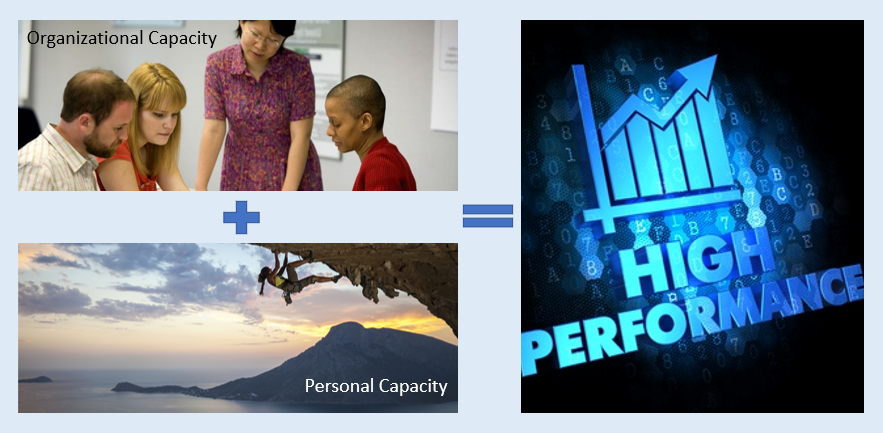This page introduces my book titled High-Capacity Non-Profits. The message is that organizational capacity + personal capacity = high performance.
This book is intended for leaders of social service-focused non-profit organizations. My target audience includes Executive Directors and Directors, people who lead the organization – but there is something here for everyone, regardless of role or level. Leadership is a personal choice and can be performed from any role, even the volunteers. My specific target audience is non-profit professionals that use mentoring as a program element in the Greater Cincinnati area. It is intended as a resource and gift to my many local customers, partners and friends.

Much of my writing is in the form of one-page documents, tools/spreadsheets, examples and slides. This book adds the “words” that wrap-around these pages and slides. The chapters are usually just 5-10 pages long, consistent with my desire to be concise.
High-Capacity Non-Profits has short chapters on the following topics:
- Organizational Capacity
- Strategic Planning
- Organization Design
- Operational Excellence
- Volunteer Management
- Mentoring
- Talent Management
- Personal Capacity
There is no single path to organizational and personal capacity. You are likely doing many things to build capacity already, e.g. hiring for new roles, introducing new metrics and improving delivery of services to clients. If so, keep doing them and build on them with new ideas you get from reading. Capacity building is an ongoing journey. Some actions are strategic, long-term and time intensive; others can be done quickly with short-term results. Here are my recommendations for high leverage starting points:
- Develop a Strategic Plan. This could be a facilitated, deep exercise or a simpler process as outlined in Chapter 3. Be sure to include a strategy with goals and actions to “build sustainable organizational capacity”.
- Develop a Process Masterplan. This is discussed in Chapter 4 on Operational Excellence. This less-than-2-hour facilitated exercise will point you to focus areas. It ignites a potential strategy to “build a culture of process management”.
- Create a Dashboard. This might be at an Executive or leadership team-level or for a specific role. Developing clear measures and assigning ownership creates immediate focus. Once done, implement a formal review process to review progress and gaps and harness the power of peer accountability. These topics are also outlined in Chapter 4.
